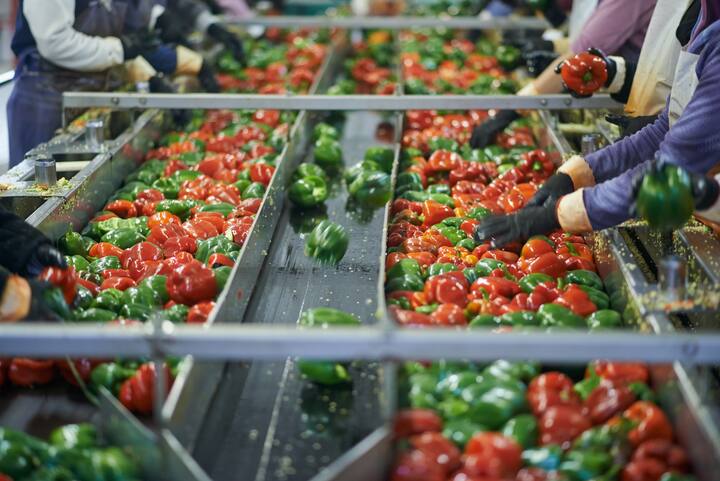
How to prevent foreign matter in the food industry
19 November 2024
How to prevent foreign matter in the food industry
Unfortunately, foreign matter is found in every food company. This includes all materials that do not naturally belong in a product, such as sand, plastic and glass. How can you control these physical hazards as a company and what measures can you take?
What is foreign matter?
According to the document State of food safety of the NVWA, foreign matter is defined as: ‘All materials, regardless of size, that do not naturally belong in a product’. These materials lead to contamination of the end product. In the HACCP study, foreign matter can be divided into soft and hard foreign matter.
Soft foreign materials include sand, dust, insects, hair, paper and soft plastic.
Hard foreign materials include metal, glass, wood, stones, hard plastic and product-specific materials such as splinters, bones, pits or stems.
Impact on health
The consumption of soft foreign matter will not have any consequences for public health. However, consumers will reject products in which hair or insects are found and will therefore be less likely to make a repeat purchase.
If consumers swallow hard foreign objects or if these become stuck in the throat, this can cause serious damage or even perforation of the oesophagus. In addition, foreign objects also lead to product recalls and damage to the company's image.
What standards are there?
There are no legal standards. However, the NVWA does have a policy on acceptable and unacceptable risk with regard to the size of foreign objects in products.
This means that the NVWA considers the presence of hard and sharp parts measuring 7 mm or more in food to be an unacceptable risk to consumers. For food intended for small children or other risk groups, the NVWA applies a limit of 2 mm.
Pieces between 7 mm and 25 mm are considered a health hazard to consumers. Pieces smaller than 7 mm occasionally pose a hazard. Pieces larger than 25 mm are relatively large and clearly visible and will therefore not be eaten. For vulnerable risk groups such as babies, patients and the elderly, pieces between 2 mm and 7 mm are also considered a risk.
The GFSI standards (BRCGS, IFS and FSSC 22000) and customer requirements may set requirements for foreign matter such as wood and metal.

Impact on the food industry
Foreign objects in products can lead to complaints from the market. In serious situations, this can even result in recalls. As a company, you naturally want to prevent this as much as possible, as it can lead to brand damage and/or claims. In 2023, the NVWA in the Netherlands reported a total of 126 recalls and warnings for food products. Of these, 19 reports related to foreign objects in products.
The top 5 reports are:
Hard/soft plastic
Small stones
Metal
Insects
Glass
Source: FoodPro Network.
What measures can you take as a company?
The risk of foreign objects in products can never be completely ruled out. However, it is possible to minimise the risk. As a company, you can take various control measures to reduce the risk of foreign objects in products.
Supplier control of raw materials and transport
Agreements with raw material suppliers regarding the permitted size of foreign objects in products.
Agreements with transport suppliers on how to handle pallets and damage.
Tip: include this in the supplier questionnaire, a questionnaire you use to assess a supplier's quality level. Curious about how to put one together? Read the tips in this blog.
Staff training
Personal hygiene
Correct procedure for opening packaging
Knife policy
Tip: Take a look at our training programme, where you will find a wide range of training courses.
Visual inspection
Upon receipt of goods, during production and upon delivery.
Line clearance before the start of production.
Tip: Proper cleaning and disinfection are essential for delivering good and safe food products. In this blog, we provide tips on how to carry out cleaning checks properly.
Equipment for detecting foreign objects during production
Use equipment to ensure that no foreign objects end up in the end product. This also serves to protect your own equipment in the company. Examples include:
Filters
Sieves
Metal detection
Magnets
X-ray equipment
Infrared inspection
Ultrasonic inspection
Gravity separation
Vortex technology
Extraction systems
RGB inspection such as hyperspectral imaging and vision system with built-in IA.
Machine maintenance
Preventive maintenance by the technical department and working correctly and tidying up tools during maintenance work.